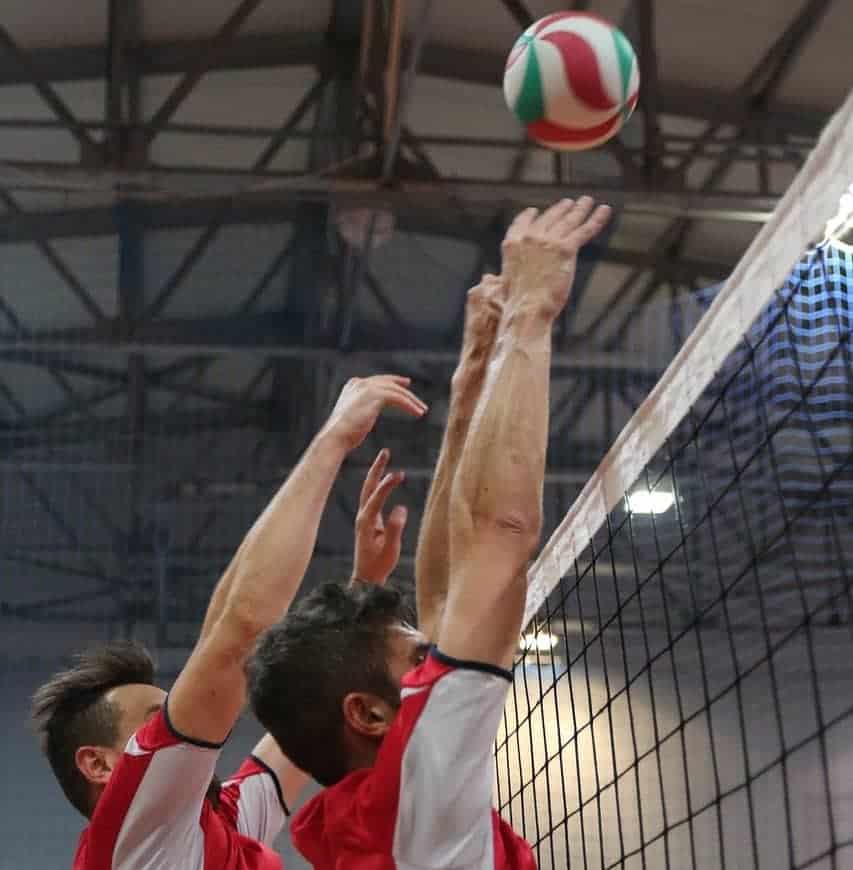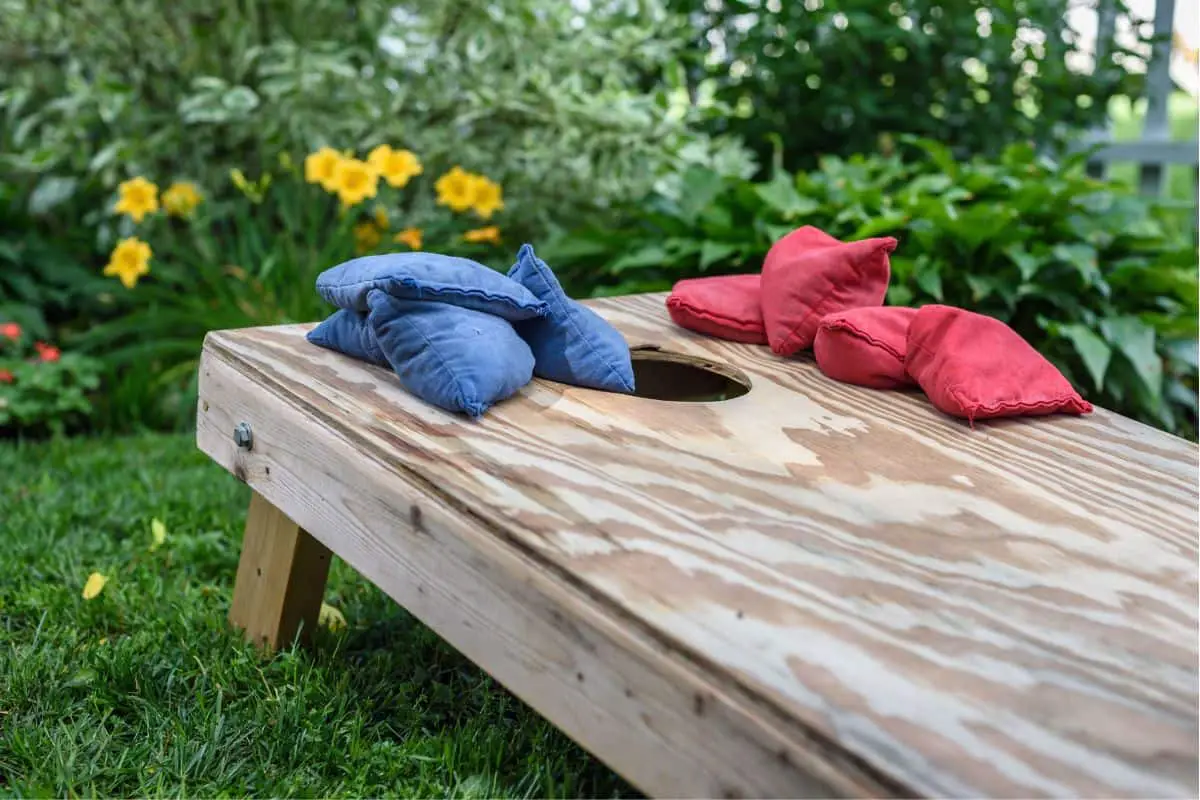Whether you’re new to the game of volleyball or you’ve been playing for years, you’ve probably seen the option of recreational coed volleyball. It’s a great way to stay social and active at the same time. However, having men and women on the court together changes things a bit. The team dynamics are different, and so are the rules.
Some of the main differences in rules for recreational coed volleyball are related to the height of the net, where on the court men are allowed to hit from, blocking rules, the requirement of having a minimum number of female players on the court, and playing positions (referred to as reverse coed or reverse sixes).
Why are recreational coed volleyball rules different?
Before going over the most common differences in rules, let’s review why some of the rules are different.
Recreational coed volleyball rules differ slightly from regular volleyball to ensure more of an even playing field. Even most feminists would agree that men and women are built differently when it comes to sports! In general, there are physiological differences between men and women, such as height, weight, muscle mass, body fat, and aerobic capacity. This means that, on average, men can jump higher and are stronger than women. (Men also tend to sweat more, but we don’t need to dwell on that!)
Of course, there are exceptions to this – some women are stronger and more fit than some men are. But we’re talking in generalizations here.
This is why men and women play in separate leagues at higher levels of competitive play, where these physiological differences are much more pronounced. (But don’t think that just because a coed league is recreational that it’s not competitive!)
Does that mean that men and women can’t play volleyball on the same court? Nope, not at all! In fact, recreational coed volleyball takes into account these physical differences by adjusting the rules slightly. This puts a whole new kind of spin on recreational volleyball, adding different strategies and dynamics to the game.
What is the net height for recreational coed volleyball?
Net height is measured at the middle of the net when it’s setup between the two poles. A standard men’s height net is 7 feet 11 5/8 inches (or 2.43 metres). A standard women’s height net is 7 feet 4 1/8 inches (or 2.24 meters). A difference of 7 inches may not seem like a lot, but it definitely is when you’re trying to spike a volleyball over it, or when you’re jumping to try to block a ball!

The height for a coed volleyball league varies on the rules of the specific league. Often, the net is set at the standard women’s net height of 7 feet 4 1/8 inches. Well, that doesn’t sound very fair, you say! This gives the male players a huge advantage! Well, there’s ways to adjust the rules to make this much more fair, as you’ll see below.
In some coed volleyball leagues, the net height is set to the men’s height of 7 feet 11 5/8 inches. This obviously puts female players at a disadvantage, especially when they’re used to playing on the women’s height net. However, many female players rise (pardon the pun!) to the occasion and enjoy the added challenge.
On a men’s height net, there is also the strategy of having female players play specific positions where they don’t have to jump as much, such as the setter or the libero (which is the specialized defensive position that digs in the back court).
Can men hit the ball in the front court in coed volleyball?
It depends. When the net is set to women’s height in coed volleyball, male players are not allowed to contact the ball above the height of the net when they are in the front court. This means that male players hit the ball from the back court, and do standing roll shots when they’re in the front court.
The separation between the back court and the front court is marked by the attack line, which is 10 feet (or 3 metres) from the net. When a back court player is jumping to hit the ball, they must start their jump from behind the attack line, but they are allowed to land in the front court.
Some male players use so much momentum when hitting from the back court, they often land well into the front court, and sometimes even get close to hitting the net. It’s important for any players standing in the front court to be aware of this range in landing zone, so they don’t become part of the landing! Yes, I’ve seen that happen! And it’s not fun for either player!
Can men block women in coed volleyball?
Also depending on the league, male players are sometimes not allowed to block a female player on the opposing team when she is hitting. A variation of this is that male players are indeed allowed to block women, but they can’t jump to do so.

This can be a contentious rule, because some female players may feel that they’re not being taken as seriously and are being given an edge. The intent of this rule is certainly not to be offensive, but to keep things fairer for female players in general. There are, of course, many female players that can hit around a double male block. But the rules in recreational league are meant to encourage participation, so need to account for generalizations in physical abilities.
Number of female players
This again differs depending on the specific league, but the general rule is there needs to be a minimum of at least 3 (or sometimes 2) female players on the court.
Teams can usually have more than the minimum number of female players, unless the specific league rules state there is a required ratio (such as 3 men and 3 women).

Having more female players than the minimum number is sometimes seen as a disadvantage, again going back to the physiological differences between men and women. But, of course, that depends on the skill level and experience of the female players 😉
What is reverse coed (or reverse sixes)?
A variation of recreational coed volleyball is known as reverse coed, which is sometimes referred to as reverse sixes. This is where the six players on the court do not rotate as the players usually do in volleyball; they play the same position on the court throughout the whole game. Male players are not allowed to play in the front court at all but can still hit from the back court.
Serving order still needs to be maintained in a reverse sixes game, so players need to remember who served last for each rally.
A minimum of 3 players must be female. Teams usually have 3 women and 3 men in reverse sixes, but I’ve also played with 2 men and 4 women, with the setter being a female in the back court, which worked really well.
Playing coed volleyball is a great variation of regular volleyball. Both men and women need to adjust the way they play, and it definitely changes the dynamics on the court. The differences in the rules are pretty easy to pick up, and they become natural the more you play.
Click here for is playing coed volleyball really that different?
Playing on a coed team or in a coed tournament might be fun option for you! Just remember that although it’s recreational, it can still be really competitive. Make sure that you find the right league for your skill level and experience. That way you’ll really get the most enjoyment out of the experience.





Leave a Reply
You must be logged in to post a comment.